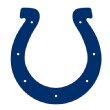There are those who opt not to head to the waiver wire after Week 1 of the fantasy football season. I (sort of) get it: You drafted the players on your roster for a good reason, let's see if they can ride it out for another week and help you get a win in Week 2 (hopefully another win after a successful Week 1).
Others were active right away on the waiver wire, seeing players like T.J. Yeldon and Phillip Lindsay skyrocket in popularity after each scored in Week 1 (and Yeldon readied to fill in for Leonard Fournette following a hamstring injury).
Whether you slow-played things or went hog wild after Week 1, we'll remind you of this: Keeping up with the waiver wire is a great way to increase your odds of winning your league. Standing pat rarely gets the job done! So, keep rolling with us each week to find the names you need to know.
A few notes, which we will post for one more week in case you didn't visit this column after Week 1:
1. Players on this list must be available in over 50 percent of leagues on ESPN.com. We still encourage you to keep your eyes out for players who bring value who might be available, but they won't be highlighted on this if they are, say, available in only 30 percent of leagues.
2. Players will appear on this list for multiple weeks. If there's still value in a player from one week to the next and he's still available in over 50 percent of leagues, look for a repeat appearance. Sometimes it takes some time for people to fully understand a player's value!
3. Not all waiver claims are created equal. This list will -- speaking generally -- be ordered from most valuable to least valuable in terms of waiver priority, but that is dependent upon what you might need. Also, not every waiver claim is a player whom you project to have on your roster for an extended period of time. It could be a one- or two-week stopgap. It could be a player you roster all season. Use the waiver wire in different ways.

Giovani Bernard, RB, Cincinnati Bengals (39.4 percent): Bernard was a player whom many cut bait on after Week 1, as his roster percentage had dropped by 14.1 percent on Saturday on Week 2 following a 1.9 point performance in Week 1. But with Joe Mixon now expected to miss two weeks or more, Bernard should be thrust right back into a feature role. He needs to be rostered in all leagues with upside of a top-20 play until Mixon returns. We'll keep an eye on how rookie Mark Walton performs during Mixon's absence, too.

Ryan Fitzpatrick, QB, Tampa Bay Buccaneers (31.3 percent): Arguably the most unexpected start to the season has been that from Fitzpatrick, who became the first player since Billy Volek in 2004 to throw for 400-plus yards and four or more touchdowns in consecutive weeks. He has an absolutely loaded group of pass-catchers, an offensive line that has given him time to operate and a favorable Week 3 matchup against the Steelers, who were shown up by the Chiefs in Week 2. He's a streaming option for this week.

John Brown, WR, Baltimore Ravens (23.9 percent): Perhaps playing in a nationally broadcast game will really spark the interest in Brown, who appeared in this column last week and has scored twice in as many games with the Ravens. Brown's greatest strength is his speed and he's been a clear focal point down the field already in Baltimore. Though he may never be a massive volume player (his career high for catches in a season is 65), he's got big-play upside aplenty and should be rostered in all sizes of leagues in the event that he becomes even more of a focal point for the Ravens' offense.

Aaron Jones, RB, Green Bay Packers (45.6 percent): I had Jones in this column last week, urging you to think a week in advance before he was eligible to return from a two-game suspension. That window is slammed shut, as Jones' ban is over and he's expected to return to the lineup this weekend. While Jones has competition in the backfield for work (Jamaal Williams and Ty Montgomery are also in this mix), my logic on adding Jones is simple: I believe him to be the most explosive of the bunch with the chance to seize this job.

Chris Godwin, WR, Tampa Bay Buccaneers (34.1 percent): There's a lot to like right now about Godwin, who is playing a prominent role in a red-hot passing offense. He's a talented player who generated buzz this offseason and has made good on it through two weeks with a pair of touchdowns. While he's perhaps the third-best wideout on Tampa Bay's roster (the Bucs are loaded at that spot), he's a compelling add given his upside and ability in the red zone.

Theo Riddick, RB, Detroit Lions (39.6 percent): There aren't a ton of running backs more adept in the passing game than Riddick, who despite not carrying the ball a single time in Week 2, had 9 catches for 47 yards. When the Lions are playing from behind or want to go up-tempo, Riddick is the easy option to play out of the backfield. He should be added in PPR leagues for anyone looking for running back depth or a flex option.

Austin Ekeler, RB, Los Angeles Chargers (42.9 percent): While Melvin Gordon is the unquestioned starter in L.A., he left the Bolts' win against the Bills late with an injury, though indications are he'll be OK. If he's limited at all in Week 3, that boosts the value of Ekeler even more, though he's been busy in two games this season with 24 total touches. The Chargers know he's too talented to keep off the field.

Geronimo Allison, WR, Green Bay Packers (9.2 percent): It's uncommon for an offense to carry three fantasy-relevant wideouts, but the Packers are an exception. Allison has 11 catches through two games and while he's only in the flex consideration in deeper leagues, he's the rare wide receiver handcuff for 10- or 12- team leagues. If something were to happen to Davante Adams or Randall Cobb, Allison could have top-30 wide receiver value.

Ted Ginn Jr., WR, New Orleans Saints (38.5 percent): While there may come a point that Cameron Meredith leapfrogs Ginn on the depth chart (I'm not saying this is a certainty), Ginn is the clear-cut No. 2 wideout in an incredible passing attack. He saw seven targets in Week 2 and is unique in his ability to make good on a fantasy day with just one play.

Keelan Cole, WR, Jacksonville Jaguars (48.4 percent): It's possible that we find ourselves asking each week whether we know for sure which Jaguars wide receiver is the most reliable to start. For now, let's use the two-game sample size of 10 catches and 170 yards for Cole to make us feel like he's a steady bet. He's not a starter in 10- or 12-team leagues, but a wise depth add should his production stay strong and his role continue to grow.
Will Dissly, TE, Seattle Seahawks (24.3 percent): The Seahawks' offense is short on bright spots at the moment, but Dissly is one of them. The rookie has delivered three catches and a touchdown in each game so far this season. At a position where it's hard to find upside, he has already suggested he has some. A player to consider for someone who does not have a top tight end on the roster, in leagues of any size.

Antonio Callaway, WR, Cleveland Browns (3.7 percent): Josh Gordon is no longer in Cleveland, with the Browns turning the page at the receiver spot. Callaway is obviously talented and put those skills on display with a late-game grab for a tying touchdown against the Saints. There's still competition for snaps among wideouts behind Jarvis Landry, but Callaway is a stash add given the unique ability and opportunity to grow into a larger role.

Eric Ebron, TE, Indianapolis Colts (35.6 percent): There's not much in the way of depth at tight end, so we always keep our eyes out for touchdowns. Well, Ebron has now scored in each of his first two games as a Colt, providing more total production than Jack Doyle. Will that keep up? It's not certain, but Ebron is an athletic option at tight end for those who have struggled to find consistency at the position through two weeks.

Andy Dalton, QB, Cincinnati Bengals (18.2 percent): Since Bill Lazor was inserted as the offensive coordinator in Cincinnati (Week 3 of 2017) Andy Dalton has 3,434 passing yards, 31 touchdowns and nine interceptions in 16 games (effectively a full season). While the quarterback schedule for Week 3 doesn't feature a ton of normal starters with imposing matchups, Dalton is someone to add for depth as you start to look ahead to bye weeks or unfavorable matchups for your starting QB.

Corey Clement, RB, Philadelphia Eagles (22.6 percent): A productive player in his own right, Clement saw an uptick in work in Week 2 with the Eagles playing from behind and Jay Ajayi leaving the game for a stretch due to a back issue. With Darren Sproles also banged up, Clement has value in a deeper PPR league as a flex play.

Javorius Allen, RB, Baltimore Ravens (18.8 percent): Though Alex Collins remains the starter in the Baltimore backfield, Allen has been a busy participant thus far, compiling 10 catches in two games and adding two rushing scores. What has been encouraging has been his goal-line duties, as he's been just about as much in the mix in that area of the field as Collins. He's a deeper-league add with PPR value.

Mike Williams, WR, Los Angeles Chargers (35.3 percent): It's great to see Williams fully healthy after an injury-riddled rookie season. He has immense talent and found the end zone in Week 2 against the Bills. While he's still third in the receiver pecking order for the Chargers, he's an upside add whose role could expand as he continues to impress in this offense.

Jarius Wright, WR, Carolina Panthers (.1 percent): Kudos to friend of the column Chris Mortensen, who noted Wright as his fantasy long shot for Week 2. Wright would go on to catch a touchdown and add six catches. We knew the Panthers would have to make up some production with Greg Olsen on the shelf. Wright stepped up and has value as a deep league flex option.


Malcolm Brown, RB, Los Angeles Rams (.5 percent) and Ito Smith, RB, Atlanta Falcons (.7 percent): These are two players who should be rostered in all leagues as the top backups (for now) in offenses where if the starter were banged up, they'd have significant value.
